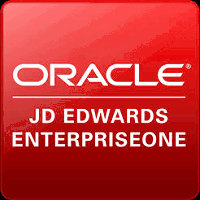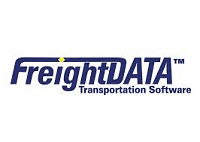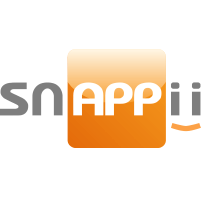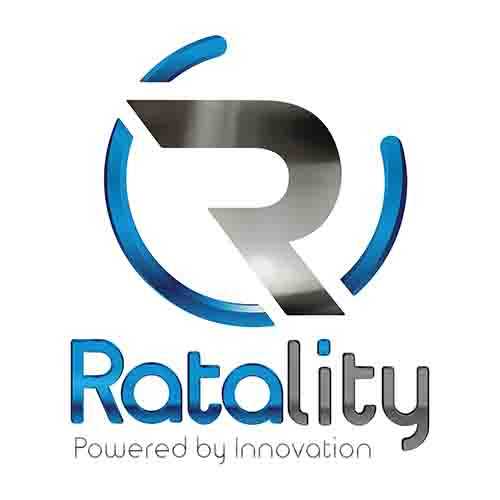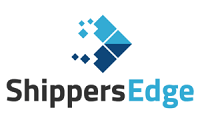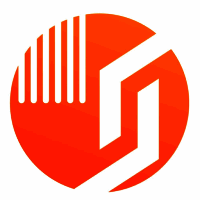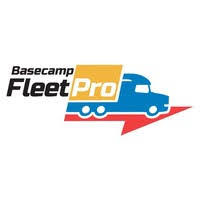What Is Transport Management Software?
Transport management software (TMS) is a robust solution that streamlines and optimizes the whole transportation process for businesses across all industries. It provides a comprehensive set of tools and capabilities that help businesses manage, track, and analyze their transportation operations, from planning and execution to delivery and reporting.
At its core, TMS serves as a central center for all transportation-related activities, offering real-time visibility and control over shipments, carriers, routes, and expenses. It automates critical processes such as order management, load planning, carrier selection, and shipment tracking, increasing efficiency and accuracy while decreasing human error and delay.
One of the primary advantages of TMS is its ability to integrate with a variety of systems and data sources, such as order management, warehouse management, and supply chain management systems. This provides a comprehensive end-to-end picture of the supply chain, allowing for data-driven decision-making to improve performance and reduce costs.
TMS also provides extensive analytics and reporting tools, enabling firms to monitor and evaluate performance parameters such as on-time delivery, carrier performance, and transportation costs. This information can be utilized to discover areas for improvement, streamline procedures, and negotiate better rates with carriers. TMS not only improves internal operations but also helps firms meet customer expectations and preserve a competitive advantage.
Businesses that use real-time monitoring and delivery updates can provide clients with more precise arrival times and improve their entire experience. Overall, Transport Management Software is a game changer for firms who want to streamline their transportation operations, improve visibility and control, and boost customer satisfaction. Businesses that use a TMS can gain significantly from cost reductions, higher efficiency, and better supply chain visibility.
What Are The Recent Trends In Transport Management Software?
Transport management software (TMS) has grown in popularity in recent years due to its capacity to increase operational efficiency, save costs, and improve customer service in the transportation industry.
As technology advances, there are various developing TMS trends to consider while making purchasing selections.
1. Cloud-Based Solutions: One of the most significant trends in TMS is the transition to cloud-based solutions. With the proliferation of mobile devices and remote work, cloud-based technologies provide real-time access to essential data from anywhere. Furthermore, these systems require minimum IT infrastructure and can readily scaled up or down, making them an excellent alternative for small and medium-sized organizations.
2. Integration With IoT: The use of Internet of Things (IoT) devices, such as sensors and GPS trackers, is increasing in the transportation industry. TMS that integrates seamlessly with IoT devices offers real-time visibility into the supply chain, allowing organizations to track and manage their fleet, shipments, and inventories more efficiently.
3. Predictive Analytics: Another rising TMS concept is the use of predictive analytics. TMS can identify probable delays and recommend best routes by evaluating data from multiple sources, including historical data, weather forecasts, and traffic patterns, allowing businesses to save time and money.
4. Artificial Intelligence (AI): AI-powered TMS is gaining popularity because it can automate a variety of processes, including route planning, load optimization, and carrier selection. These systems can constantly learn and develop based on data, making them an invaluable asset for firms seeking to streamline their processes.
5. Sustainability: As businesses value sustainability, TMS is developing to suit that requirement. TMS can now track emissions and carbon footprints, allowing businesses to make more environmentally conscious decisions about freight transportation. This not only benefits the environment but may also result in long-term economic savings.
Benefits Of Using Transport Management Software
Transport management software is a crucial tool for firms who want to streamline and optimize their transportation procedures. This program provides a variety of capabilities, from order administration to fleet tracking, that can considerably help any organization involved in the transportation of goods or services.
Let's explore, we will look at the many advantages of adopting transport management software and help you make an informed decision when selecting the best software for your company.
1. Increased Efficiency: One of the most significant advantages of employing transport management software is the increased efficiency it offers. This program can greatly reduce the time and effort necessary to run your transportation operations by automating functions such as order processing, load optimization, and route planning.
2. Improved Visibility: Another significant benefit of employing transport management software is the increased visibility. This program offers vital insights into your transportation processes, including real-time shipment tracking and access to extensive analytics and reports. This allows you to make better-informed decisions and manage your operations for optimal efficiency.
3. Cost Savings: By automating activities and enhancing visibility, transport management software can help your firm save money. You should expect a significant reduction in transportation expenses with more effective routes, shorter idle times, and improved resource management.
4. Improved Customer Service: Timely delivery is an important aspect in offering outstanding customer service. With transport management software, you can assure on-time delivery and keep your customers happy. Real-time shipping monitoring also allows you to keep clients up to date on their orders, which increases overall satisfaction.
5. Centralized Management: Transport management software provides a single platform for controlling all areas of your transportation business. This eliminates the need for manual processes and spreadsheets, which saves time and reduces the possibility of errors.
6. Integration With Other Systems: Many transport management software packages support integration with other corporate systems, such as inventory management or accounting software. This integration ensures a smooth flow of information between departments, reducing errors and increasing efficiency.
7. Compliance And Safety: Driver and vehicle management are common aspects of transport management software that help ensure safety requirements are followed. This can help to avoid accidents and safeguard your company from potential legal troubles.
8. Scalability: As your company expands, your transportation requirements will vary. With transport management software, you can effectively increase your operations without causing disruption. Many software alternatives include various packages or configurable features, making it easier for your company to adapt to changing needs.
Important Factors To Consider While Purchasing Transport Management Software?
Transport management software is an essential technology tool for companies in the logistics and transportation sectors. It helps to streamline operations, cut expenses, and increase efficiency. However, with so many options available on the market, selecting the correct transport management software can be difficult.
To make your purchasing process easier, here are some crucial elements to consider while assessing and selecting transport management software:
1. Scalability: When investing in transport management software, consider your future development objectives. Look for a software solution that can grow with your organization and meet your changing needs and operations.
2. Comprehensive Features: The software should provide a wide range of functionality for managing the complete transportation process, from load planning and route optimization to billing and invoicing. It should also provide customization possibilities to meet your specific business requirements.
3. Integration Capabilities: Your transportation management software should work easily with your existing systems, such as accounting or warehouse management. This will help to reduce data entry errors and streamline operations.
4. User-Friendly Interface: Your workers should be able to utilize the software without additional training. The system should be intuitive and simple to use, so that your team can use it with little effort.
5. Real-Time Tracking: Real-time cargo tracking is a key component of transport management software. This allows you to follow the status of your vehicles, drivers, and shipments, allowing you to make more educated business decisions.
6. Customer Support: It is critical to select a software vendor who provides dependable customer assistance. Look for features such as 24-hour technical assistance, training, and regular upgrades to guarantee that your program functions smoothly.
7. Security: Because your transport management software will handle sensitive data, such as client information and financial records, you must choose a vendor who offers top-tier security measures to protect your data from cyber threats.
8. Pricing: When selecting transport management software, you must consider the cost of the software and its deployment, as well as any additional fees for maintenance and support. To avoid surprises, ensure that you receive a clear breakdown of all charges.
What Are The Key Features To Look For In Transport Management Software?
When investing in Transport Management Software (TMS), it is critical to evaluate a variety of variables to ensure that you make the best decision for your organization. TMS is a comprehensive system that allows businesses to easily manage and optimize their transportation operations, resulting in cost savings and increased production.
To assist you in making an informed decision, we have highlighted the following critical aspects to look for in a TMS:
1. Route Planning And Optimization: One of the key objectives of TMS is to assist you in planning and optimizing your shipment routes. Look for a system that provides real-time traffic and weather information, as well as the ability to factor in delivery windows, load capacities, and other limits to generate the most effective routes.
2. Fleet Tracking And Management: A TMS should enable you to track your fleet in real time and monitor its performance, such as speed, fuel usage, and driver conduct. This function is critical for increasing operating efficiency, lowering fuel costs, and assuring your drivers’ safety.
3. Integration Capabilities: Select a TMS that works easily with your current systems, like as ERP and order management software. This would enable smooth data interchange while eliminating human data entry, saving time and decreasing errors.
4. Freight Contract And Rate Management: Managing freight contracts and rates can be a complicated and time-consuming task. Look for a TMS that automates this process so you can easily compare rates from different carriers and negotiate better offers.
5. Proof Of Delivery And Invoicing: With electronic proof of delivery (ePOD) and automated invoicing, a TMS simplifies the billing process and reduces customer disputes. Make sure the system you chose has these characteristics and links with your accounting software for easy invoicing and payment processing.
6. Analytics And Reporting: A strong TMS should include complete analytics and reporting capabilities that will allow you to evaluate performance, identify areas for improvement, and make data-driven choices. Look for a system that provides configurable dashboards and real-time data updates.
7. Mobile Access: In today's fast-paced corporate world, it is crucial to have access to critical information when on the go. Look for a TMS that includes a mobile app or a web-based platform, allowing you to access and manage your transportation operations from anywhere and at any time.
Why Do Businesses Need Transport Management Software?
Businesses require transportation management software to ensure efficient and optimized transportation operations. This software not only streamlines day-to-day task management but also gives vital insights into the transportation process, allowing firms to make more educated decisions. One of the primary reasons firms want transportation management software is to improve efficiency and lower expenses.
This software allows firms to plan and optimize their transportation routes, resulting in greater resource utilization and cost savings. It also helps to automate procedures like order placement, tracking, and invoicing, saving organizations time and money. Another important issue that transport management software covers is real-time tracking and visibility of commodities.
This function provides organizations with complete control and visibility over the transportation process, allowing them to track the transit of goods and make required adjustments in the event of delays or unexpected incidents. Transport management software also helps to improve customer service by giving accurate and timely information about delivery status. This allows firms to manage consumer expectations and keep them informed of the status of their shipments.
Furthermore, this software supplies firms with data and analytics to assist them identify areas for improvement and cost-cutting initiatives. This data can also be utilized to compare transportation performance and make future decisions. Businesses benefit from the compliance and safety elements offered by transport management software. This program aids in the compliance with norms and standards, assuring the safe and secure transportation of commodities.
How Much Time Is Required To Implement Transport Management Software?
The implementation time for transport management software varies depending on a number of factors, including the size and complexity of your business operations, the software's unique features and functionalities, and the level of customisation necessary. A transport management software implementation can take anything from a few weeks to a few months.
The first step in installing transport management software is to thoroughly evaluate your present transportation procedures and find opportunities for improvement. This aids in determining the precise features and functionalities that your organization need. After selecting the program, the following step is to migrate the data. This involves transferring data from your current systems to the new software.
The time required depends on the amount of data and the complexity of the data structure. The next step is to configure and customize. This entails customizing the software to match the specific requirements of your company. This can include establishing user roles and permissions, developing procedures, and arranging integrations with other systems. After configuring the software, it is tested to ensure that it works properly.
This may take several weeks while any issues or bugs are resolved. Once the product is judged ready, end-users receive training to ensure they understand how to use it properly. Overall, the implementation period for transport management software can range from 4 to 12 weeks for small and medium-sized firms, and longer for bigger enterprises. To minimize disturbance to business operations during the implementation process, select a software vendor that provides comprehensive training and support.
What Is The Level Of Customization Available In Transport Management Software?
Transport management software is an essential tool for firms in the transportation industry since it streamlines and automates many processes, resulting in cost savings and improved efficiency. As a buyer, you should understand the extent of customization possible in transport management software to ensure that it suits your unique demands and expectations.
Different transport management software manufacturers provide varying amounts of customization, depending on the product's features and capabilities. In general, transport management software offers three degrees of customization: basic, intermediate, and advanced. Basic customisation is often defined as the capacity to modify software to a single industry or mode of transportation, such as trucking, shipping, or air freight.
This enables you to tailor the software's vocabulary, labels, and fields to your own industry and business procedures. Intermediate customization enhances basic customization by allowing you to tailor the program to your own business processes and workflows. This can include capabilities such as building custom forms, enabling automated alerts and notifications, and integrating third-party applications to provide a more seamless experience.
Advanced customization provides the highest level of customization, allowing you to edit the software's source code. This level of customization necessitates technical skill and is usually provided as a professional service by the seller. It lets you create custom fields, add new features, and even interact with your existing corporate systems.
Before making a purchase, consider the level of customisation provided by various transport management software companies. Determine your company's exact demands and look for software that provides the level of customization that meets those requirements. Keep in mind that a higher level of personalization may incur a larger cost, so consider the benefits against your budget.
Which Industries Can Benefit The Most From Transport Management Software?
Transport Management Software (TMS) is an essential tool for firms that rely on transportation to conduct their operations. This software optimizes and automates transportation management processes, such as route planning, vehicle tracking, and inventory management. While the benefits of TMS are numerous, certain industries may gain the most from its deployment.
Let's explore, we'll go over the industries that can benefit the most from TMS and the characteristics that make it a valuable asset to their operations.
1. Logistics And Supply Chain Management: The logistics and supply chain business stands to benefit the most from TMS. This program allows logistics organizations to plan, optimize, and track their shipments, improving delivery times and increasing efficiency. TMS also improves inventory and warehouse operations, lowering the risk of stockouts and overstocking. TMS, with its real-time visibility and automated operations, also contributes to lower operational expenses and higher overall customer satisfaction.
2. Retail And E-commerce: Retail and e-commerce enterprises rely largely on transportation to deliver items to clients. TMS can assist these organizations in managing their delivery schedules and optimizing routes to reduce delivery times. With the rise of e-commerce, customers now anticipate same-day or next-day delivery. TMS enables this by providing real-time tracking and delivery updates, resulting in on-time deliveries and satisfied customers. Furthermore, by integrating TMS with order management systems, retailers may fully automate the order fulfillment process, saving time and reducing errors.
3. Manufacturing And Distribution: For manufacturing and distribution organizations, timely delivery of raw materials and completed goods is critical to their operations. TMS enables these businesses to better plan and manage their inbound and outgoing shipments. They can also obtain visibility into their shipments, reducing delays and interruptions. TMS can also benefit organizations with thin margins by optimizing routes and lowering transportation expenses.
4. Transportation And Trucking: Transportation and trucking companies are the foundation of the logistics industry. TMS is an important tool for these firms since it helps manage the entire fleet, from route planning to fuel management and driver performance tracking. Real-time tracking and delivery updates improve contact with clients and ensure timely deliveries. TMS allows transportation companies to reduce idle miles and enhance vehicle utilization, resulting in significant cost savings.
Conclusion
After performing comprehensive research on numerous transport management software solutions, it is clear that investing in dependable and effective software is critical for transportation-related firms. These software solutions provide a variety of features and capabilities that can help to optimize operations, increase productivity, and ultimately boost profitability.
Transportation management software can benefit organizations of all sizes by automating time-consuming manual activities and offering real-time data and analytics. It can help with route optimization, fleet management, shipment tracking, and improving communication among stakeholders. When evaluating various software options, it is critical to first examine your individual business requirements and goals.
This will help you select software that meets your needs and provides the most value for your money. Before making a final decision, keep ease of use, customer support, and scalability in mind. Furthermore, it is recommended to select software that provides configurable solutions and interfaces with other existing systems to provide a continuous flow of information. Cloud-based software may also be a better alternative for organizations because it allows for remote access while lowering IT infrastructure expenditures.
Finally, transport management software is a must-have tool for organizations in the transportation industry trying to streamline operations, boost efficiency, and remain competitive. Businesses using the proper software should expect significant cost savings, greater customer service, and increased overall productivity. Take the time to properly investigate and assess various software options to determine the greatest fit for your company.




